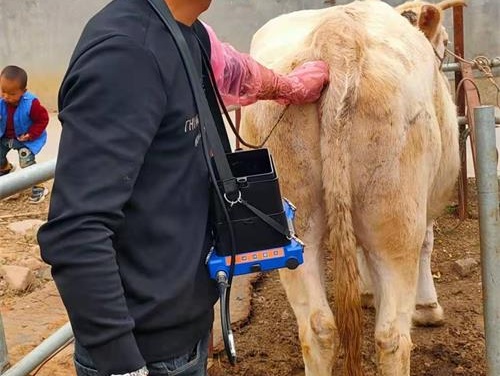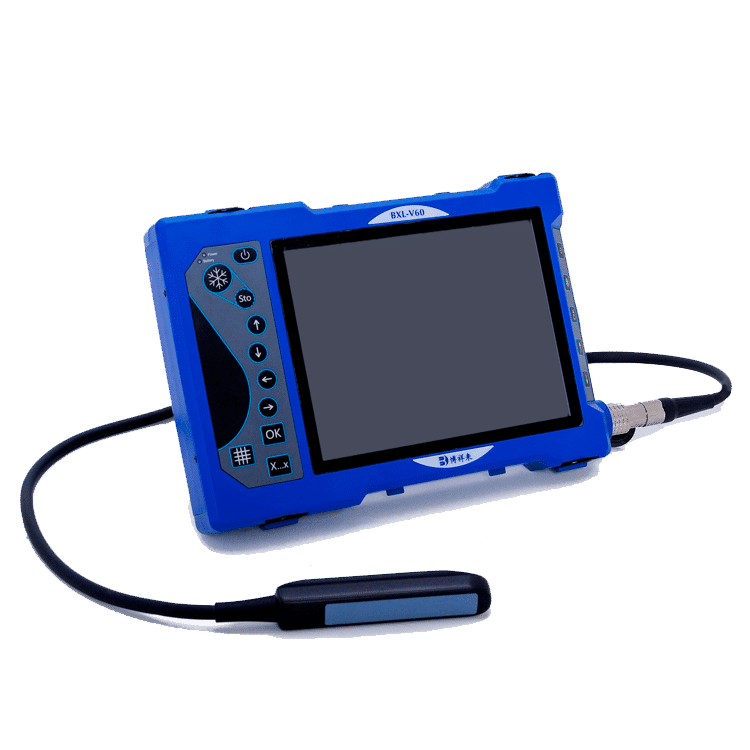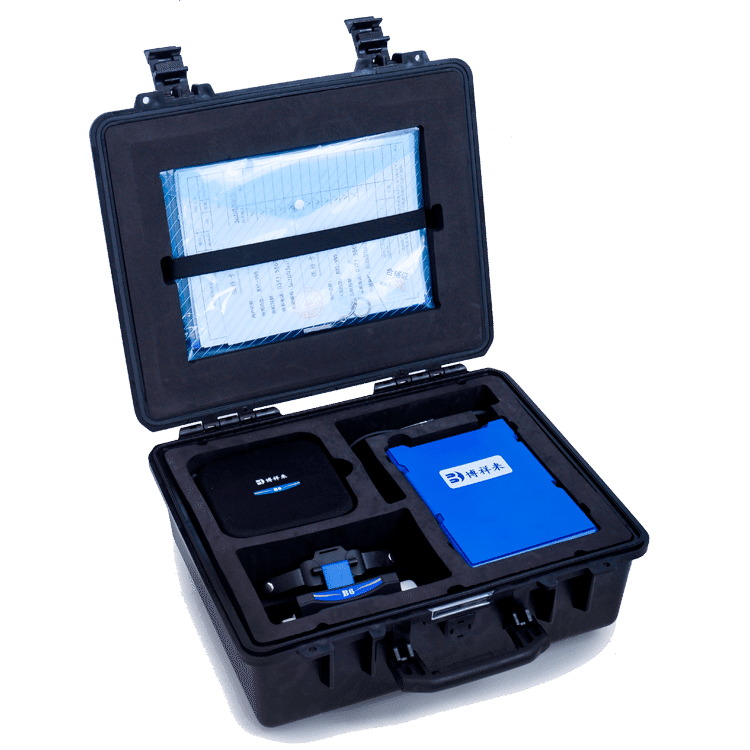Ultrasound has become an indispensable tool in modern livestock management, particularly for cattle breeders and large animal veterinarians. From reproductive scanning to the assessment of internal soft tissue structures, bovine ultrasound enables faster, safer, and more accurate diagnoses—all while minimizing stress to the animal. As this technology becomes increasingly portable and affordable, many cattle farmers are considering investing in their own systems. But before making a purchase, it’s essential to understand the key factors that determine performance, durability, and return on investment.

This article outlines the critical considerations when selecting a bovine ultrasound machine, including equipment quality, probe durability, image clarity, and usability in field conditions. Whether you’re a livestock veterinarian, a dairy operation manager, or a beef cattle breeder, understanding these factors will help you choose the right equipment for your herd’s health and productivity.
Why Use Ultrasound for Cattle?
Ultrasound imaging—also known as ultrasonography—uses high-frequency sound waves to produce images of the inside of an animal’s body. For cattle, ultrasound is commonly used for:
-
Reproductive monitoring, including pregnancy diagnosis and follicle assessment.
-
Soft tissue injury evaluation (e.g., tendons, ligaments).
-
Diagnosing organ pathologies, including liver, bladder, and intestinal conditions.
-
Monitoring fetal development.
-
Guiding procedures like fine-needle aspiration or biopsy.
Compared to other diagnostic tools, ultrasound is non-invasive, provides real-time imaging, and is relatively stress-free for the animal. It is also significantly safer than radiographic imaging since it does not use ionizing radiation. For these reasons, bovine ultrasound has become a cornerstone in both routine herd health programs and advanced veterinary diagnostics.

Key Considerations Before You Buy
-
Image Quality and Resolution
High-resolution imaging is paramount for accurate diagnosis. Look for ultrasound machines that offer:
-
High contrast and resolution even in large-bodied animals.
-
Real-time image enhancement features such as dynamic focusing, tissue harmonic imaging, or speckle reduction.
-
Preset optimization modes tailored for bovine reproductive and abdominal scanning.
Blurry or low-resolution images can lead to misinterpretation, delayed treatment, or missed diagnoses. Ensure the machine provides clear, consistent images under a variety of scanning conditions.
-
Durability and Build Quality
Farm environments are tough on equipment. Ultrasound machines used in cattle barns, pastures, or mobile vet units must be built to withstand:
-
Dust, moisture, and manure exposure.
-
Physical impacts, such as being dropped or stepped on by animals.
-
Long hours of use in variable weather conditions.
Look for models with ruggedized housing, waterproof or sealed probes, and shock-resistant construction. Transducers (probes) should be particularly durable, as they are often inserted rectally for reproductive exams and are at risk of wear and damage from animal movement.
-
Type of Probe
The type of probe you choose significantly affects both image quality and ease of use. For bovine ultrasound, the most common transducer options include:
-
Linear Rectal Probe: Ideal for transrectal reproductive exams and follicular scanning.
-
Convex or Curvilinear Probe: Better suited for abdominal imaging due to its wider field of view.
-
Microconvex Probe: Offers good versatility for smaller body regions or younger animals.
Some systems allow multiple probe connections, which is useful if you’re performing a range of exams. Probe frequency also matters: higher frequencies offer better resolution but lower penetration, while lower frequencies are better for imaging deep structures in large-bodied animals.
-
Portability and Power Supply
If you’re working in a large pasture or conducting fieldwork, portability is key. Portable bovine ultrasound systems offer the following benefits:
-
Lightweight design, often wearable on the body or handheld.
-
Long battery life to support extended work sessions.
-
Wireless probe options for enhanced flexibility.
-
Sunlight-readable displays for outdoor use.
Battery-powered portable units are especially valuable for mobile veterinarians and farmers who need to scan animals across wide-ranging facilities.

-
User Interface and Ease of Operation
Modern ultrasound machines are designed to be user-friendly—even for operators with limited imaging experience. Look for features such as:
-
Intuitive touchscreens or simple button-based navigation.
-
Preloaded presets for cattle anatomy.
-
On-screen measurement tools and annotations.
-
Language customization options for global users.
Some models also include training modes, visual guides, or downloadable scan protocols to support consistent, accurate use.
-
Cost vs. Value
While cost is an important factor, the cheapest option isn’t always the best value. Instead of focusing purely on price, consider:
-
Warranty coverage (minimum 12–24 months).
-
Availability of technical support and training.
-
Software upgrade options.
-
The reputation of the manufacturer among livestock professionals.
You can often find discounted or refurbished systems from authorized resellers without sacrificing quality, but ensure the machine still meets the clinical and field-use standards you require.
-
Regulatory Compliance and Veterinary Certification
Make sure the ultrasound system complies with veterinary diagnostic standards in your region. In some countries, medical-grade imaging equipment used for animals must meet specific veterinary ISO or CE certifications. This ensures safety, image reliability, and device longevity.
-
Training and Support
Even the most advanced ultrasound system won’t deliver its full potential without proper training. Many veterinarians and farmers learn scanning techniques through:
-
In-person workshops or veterinary training sessions.
-
Online video tutorials or courses.
-
On-site demonstrations from equipment vendors.
Before purchasing, ask whether training materials or support programs are included. Some providers offer remote troubleshooting and software walkthroughs, which are especially useful for first-time users.

Common Use Cases for Bovine Ultrasound
The following scenarios represent the most common—and most profitable—applications of ultrasound in bovine practice:
-
Early Pregnancy Detection (as early as 28 days post-breeding).
-
Ovarian Follicle Monitoring for estrus synchronization or IVF.
-
Embryo viability assessment in dairy and beef cattle.
-
Postpartum uterine evaluation for retained placenta or endometritis.
-
Guided aspiration of abscesses or cysts.
-
Musculoskeletal injury diagnostics in breeding bulls.
Integrating ultrasound into your herd health program not only improves reproductive efficiency but can also help you make informed decisions about culling, treatment, and breeding schedules.
Return on Investment (ROI)
For many cattle operations, purchasing an ultrasound machine becomes cost-effective within a single breeding season. By enabling faster pregnancy confirmation and improving heat detection accuracy, ultrasound helps reduce open days, minimize rebreeding costs, and increase overall herd productivity.
Veterinarians who offer on-farm ultrasound services also see strong revenue generation through imaging fees. In-house ultrasound reduces referral needs, speeds up diagnosis, and builds client trust by offering visible, real-time results.
Final Thoughts
Bovine ultrasound is more than just a diagnostic tool—it’s an investment in herd health, reproductive success, and operational efficiency. By choosing a high-quality, rugged, and user-friendly machine tailored for large animal use, you can reduce medical guesswork and improve outcomes in your cattle enterprise.
Take the time to compare features, seek recommendations from industry peers, and ensure the system you choose aligns with your diagnostic goals and working conditions. With the right ultrasound unit, you’ll gain a powerful advantage in livestock care and management.

Resources:
-
DeFrancesco T, Royal K. A survey of point-of-care ultrasound use in veterinary general practice. Education in the Health Professions. 2018;1(2): 50. https://doi.org/10.4103/ehp.ehp_21_18
-
Pelchat J, Chalhoub S, Boyson SR. The use of veterinary point-of-care ultrasound by veterinarians: A nationwide Canadian survey. Canadian Veterinary Journal. December 2020. https://www.ncbi.nlm.nih.gov/pmc/articles/PMC7659883/
-
Janson CO, Hezzell MJ, Oyama MA, et al. Focused cardiac ultrasound and NT‐proBNP assay for respiratory distress in cats. Journal of Veterinary Emergency and Critical Care. https://doi.org/10.1111/vec.12957
-
Kumar V, Kumar A, Varshney AC, et al. Diagnostic imaging of canine hepatobiliary affections: a review. Veterinary Medicine International. https://doi.org/10.1155/2012/672107
-
Feliciano MAR, et al. Ultrasonography methods for predicting malignancy in canine mammary tumors. PloS One. 2017. https://doi.org/10.1371/journal.pone.0178143
-
Pagani E, et al. Ultrasonographic features of adrenal gland lesions in dogs. BMC Veterinary Research. 2016. https://doi.org/10.1186/s12917-016-0895-1